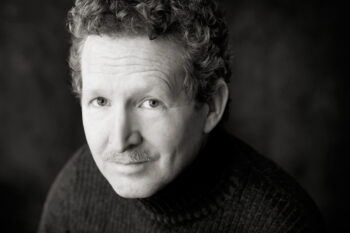


In Sanskrit, satya is the word typically translated as “truth.” It is derived from the verb “to be.” The word sat means “being, existing.” Adding the suffix –ya yields satya, which might be translated as “the state of being,” the “state of existing.” It is not a long leap to translate it as “reality” or “truth.” It is this satya that appears in such famous Buddhist terms as the four noble truths, the two truths, ultimate truth, and conventional truth. Each of these terms is the subject of extensive commentary and exegesis by the various philosophical schools of Buddhism. But a less famous term provides insights into not just truth but also its inherent power.
Satyavacana combines the word for “truth” with vacana, meaning “speech” or “statement.” The root vac is a cognate of the Latin vox and the English voice. When we speak of “the word of the Buddha,” vacana is translated as “word.” Thus we might translate satyavacana as “words of truth” or “truth statement.” In one sense, it simply means a statement of fact. In Buddhism, however, the statement of the truth has a particular power—indeed a magical power.
Many stories illustrate this power. On the night that Prince Siddhartha left his palace in search of a state beyond birth and death, he had to dispense with his royal raiment and long locks. Drawing his sword, he cut off his hair with a single stroke and threw it into the air, saying, “If I am to become a buddha, let it remain in the sky.” The prince threw his locks high enough that they reached the summit of Mount Meru, where the god Indra caught them and placed them in a shrine. The future Buddha’s words are an example of a statement of truth.
Such statements abound in Buddhist literature. They not only predict the future—as in this story—but also restore what has been lost, including body parts. There is an entire genre of Buddhist literature about dehadana, “gift of the body.” These stories regularly appear in the Jataka collection, a recounting of the Buddha’s previous lives.
One such dehadana story involves King Śibi. The god Indra hears of the king’s great generosity and decides to test him. Disguising himself as a blind priest, he asks the king for one of his eyes. The king immediately gives him both. Impressed by the king’s willingness to give away something as precious as his eyesight, Indra reveals his divine form and praises the king. Learning that the blind priest is not really blind, the king asks to have his sight restored. Indra apologizes, saying it is beyond his powers; only a statement of truth can restore King Śibi’s sight. In W. H. D. Rouse’s 1901 translation, the king declares:
Whatever sort, whatever kind of suitor shall draw near,
Whoever comes to ask of me, he to my heart is dear:
If these my solemn words be true, now let my eye appear!
The king’s eye grew back in its socket. Another statement of truth was required for the other eye. This narrative illustrates how in Buddhism a simple statement of the truth, rather than a prayer or a magic spell, can have transformative power, a power greater than that of even Indra, the king of the gods.
Let me close with another story. One day a poisonous snake bit a young boy. Buddhist monks often possessed medical knowledge, so the distraught parents stopped a passing monk and asked him to save their child’s life. Examining the bite, the monk said that there was no antidote; the only possible cure was an act of truth. Time was short, as the poison was spreading up the boy’s leg toward his heart. The monk asked the father to speak. He said, “If I have never seen a monk that I did not think was a scoundrel, may the boy live.” The poison retreated to the boy’s waist. Next the mother said, “If I have never loved my husband, may the boy live.” The poison retreated to the boy’s leg. The monk said, “If I have never believed a word of the dharma, finding it to be utter nonsense, may the boy live.” The boy rose, completely cured. Here the truth has the power to cure a snakebite. It also has the power to make us smile.

Donald S. Lopez Jr. is the Arthur E. Link Distinguished University Professor of Buddhist and Tibetan studies at the University of Michigan. His recent books include Hyecho’s Journey: The World of Buddhism, Gendun Chopel: Tibet’s Modern Visionary, and The Passion Book: A Tibetan Guide to Love and Sex, with Thupten Jinpa.
Get the latest news and stories from the Rubin, plus occasional information on how to support our work.